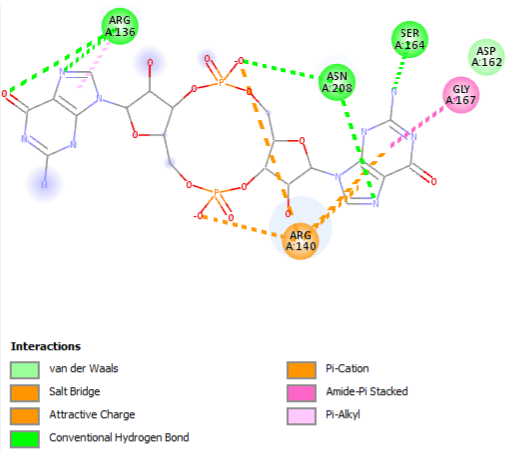This is a default text for your page Eduardo Soares/Sandbox 1. Click above on edit this page to modify. Be careful with the < and > signs.
You may include any references to papers as in: the use of JSmol in Proteopedia [1] or to the article describing Jmol [2] to the rescue.
PilZ domain
The concept of PilZ Domains as c-di-GMP Effectors is supported by compelling bioinformatics analysis. PilZ domains, typically located at the C-terminus of cellulose synthetase, produced by the bcsA gene, have been proposed to act as effectors for the signaling molecule cyclic diguanylate monophosphate (c-di-GMP). The discovery that c-di-GMP functions as an allosteric regulator of cellulose synthetase in Gluconacetobacter xylinus, as demonstrated by Benziman and colleagues, represented a significant breakthrough in the field.
Notably, the PilZ protein in Pseudomonas aeruginosa contains a single 118-residue domain exhibiting substantial sequence similarity to the C-terminus of BcsA. Within the pil operon, responsible for the synthesis and functionality of pili, PilZ is among the few proteins with an unknown function. This operon plays a role in the transition from motile to sessile growth modes, although the precise regulatory mechanisms remain elusive. Strains lacking the PilZ domain (ΔpilZ) can produce normal levels of pilin protomers but are unable to assemble functional pili.
Furthermore, other PilZ-domain proteins have been implicated in the regulation of motility across various organisms. For instance, the YcgR protein in Escherichia coli and the DgrA and DgrB proteins in Caulobacter crescentus have demonstrated involvement in controlling motility under high cytosolic c-di-GMP concentrations. Notably, certain PilZ domains are situated at the C-terminus of proteins participating in processes sensitive to c-di-GMP levels. Alg44 from P. aeruginosa represents another example, functioning as an essential protein in the c-di-GMP-regulated process of alginate biosynthesis. These discoveries provide robust evidence supporting the hypothesis that the majority of PilZ domains function as effectors, binding c-di-GMP, and exerting a critical role in the regulation of various cellular processes.
Molecular Interaction
The PilZ domain is typically found in proteins associated with type IV pili and other c-di-GMP-regulated processes. When c-di-GMP is present in the bacterial cell, it can bind to the PilZ domain, leading to conformational changes in the protein structure. This conformational change can result in alterations in protein-protein interactions or changes in protein activity, ultimately affecting the downstream processes regulated by the PilZ-containing protein.
The binding of c-di-GMP to the PilZ domain is specific and occurs through conserved amino acid residues within the domain. The affinity and specificity of the interaction can vary among different PilZ-containing proteins, allowing for fine-tuning of c-di-GMP signaling in different bacterial species.

Function in Virio cholera
Cyclic diguanylate monophosphate (c-di-GMP) signaling plays a crucial role in the life cycle of Vibrio cholerae, a bacterium responsible for causing the human disease cholera (Islam et al., 1993). Cholera is characterized by potentially life-threatening diarrhea resulting from the secretion of cholera toxin. Studies have revealed that c-di-GMP regulates the expression of virulence genes in V. cholerae (Tischler and Camilli, 2005). Among the proteins involved in c-di-GMP signaling is VieA, a c-di-GMP phosphodiesterase that modulates cholera toxin production by influencing the cytosolic levels of c-di-GMP. Additionally, the genome of V. cholerae contains five PilZ domain-containing proteins, one of which is VCA0042. These proteins diverged in sequence before the divergence of the Vibrio lineage (Figure 1A) and are believed to function as regulators of various cellular processes controlled by c-di-GMP. VCA0042 has recently been named PlzD and has been shown to bind c-di-GMP when immobilized on nitrocellulose in its native conformation (Pratt et al., 2007). Furthermore, a study has demonstrated that either VCA0042/PlzD or VC2344/PlzC, another PilZ domain-containing protein in V. cholerae, is required for efficient colonization of the intestines of mice by the El Tor biotype of V. cholerae in a virulence assay.
Relevance
Structural highlights
This is a sample scene created with SAT to by Group, and another to make of the protein. You can make your own scenes on SAT starting from scratch or loading and editing one of these sample scenes.

